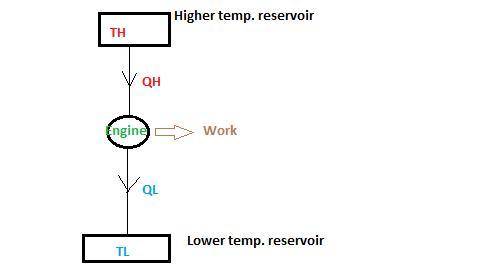
Physics, 10.12.2019 04:31 xxchloekai
Aheat engine operates between a hot reservoir with a temperature of 400 k and a cold reservoir with a temperature of 300 k. the engine accepts 500 j of energy from the hot reservoir, does 150 j of work, and exhausts 350 j of energy into the cold reservoir.1)does this engine violate any laws of thermodynamics? it violates neither the first nor the second law of thermodynamics. it violates the first law of thermodynamics, but not the second. it violates the second law of thermodynamics, but not the first. it violates both the first and second laws of thermodynamics. can someone explain?

Answers: 3


Another question on Physics

Physics, 21.06.2019 23:30
1.in one challenge on the titan games, competitors have to lift 200 pounds up a long ramp. angel is able to move the weight in 42 seconds. anthony gets it done in only 38 seconds. which statement is true? angel has more power than anthony. angel does more work than anthony. anthony does more work than angel. anthony has more power than angel. 2.a mountain climber exerts 41,000 j of work to climb a cliff. how much power does the climber need if she wants to finish in only 500 seconds? power = work / time 20,500,000 watts 82 watts 0.0122 watts 41,500 watts 3.your family is moving to a new apartment. while lifting a box 83 joules of work is done to put the box on a truck, you exert an upward force of 75 n for 3 s. how much power is required to do this? (hint: you only need two of the 3 numbers given! ) power = work / time 249 watts 25 watts 2075 watts 27.7 watts
Answers: 1

Physics, 22.06.2019 06:50
Much of the information taught in earth-space science would not be available if it weren’t for our remote sensing abilities. explain two ways our remote sensing strategies contribute to our knowledge of these topics.
Answers: 3

Physics, 22.06.2019 16:50
Which best describes the first law of thermodynamics as compared to the second law of thermodynamics? a. the first law describes how thermal energy is conserved but not the direction it moves. b. the first law describes the direction thermal energy moves but not how it is conserved. c. the first law describes how thermal energy can be created but not how it can be destroyed. d. the first law describes how thermal energy can be destroyed but not how it can be created.
Answers: 1

Physics, 22.06.2019 18:30
Ahot-air balloon is 11.0 m above the ground and rising at a speed of 7.00 m/s. a ball is thrown horizontally from the balloon basket at a speed of 9.00 m/s. ignore friction and air resistance and find the speed of the ball when it strikes the ground.
Answers: 1
You know the right answer?
Aheat engine operates between a hot reservoir with a temperature of 400 k and a cold reservoir with...
Questions


Business, 21.12.2020 14:00

Chemistry, 21.12.2020 14:00




Computers and Technology, 21.12.2020 14:00

English, 21.12.2020 14:00

Mathematics, 21.12.2020 14:00


History, 21.12.2020 14:00


Mathematics, 21.12.2020 14:00

World Languages, 21.12.2020 14:00


Physics, 21.12.2020 14:00

Mathematics, 21.12.2020 14:00

Mathematics, 21.12.2020 14:00


English, 21.12.2020 14:00







 which is true.
which is true.





 ) ideal efficiency is less than the actual efficiency which violates the Second Law of thermodynamics.
) ideal efficiency is less than the actual efficiency which violates the Second Law of thermodynamics.


